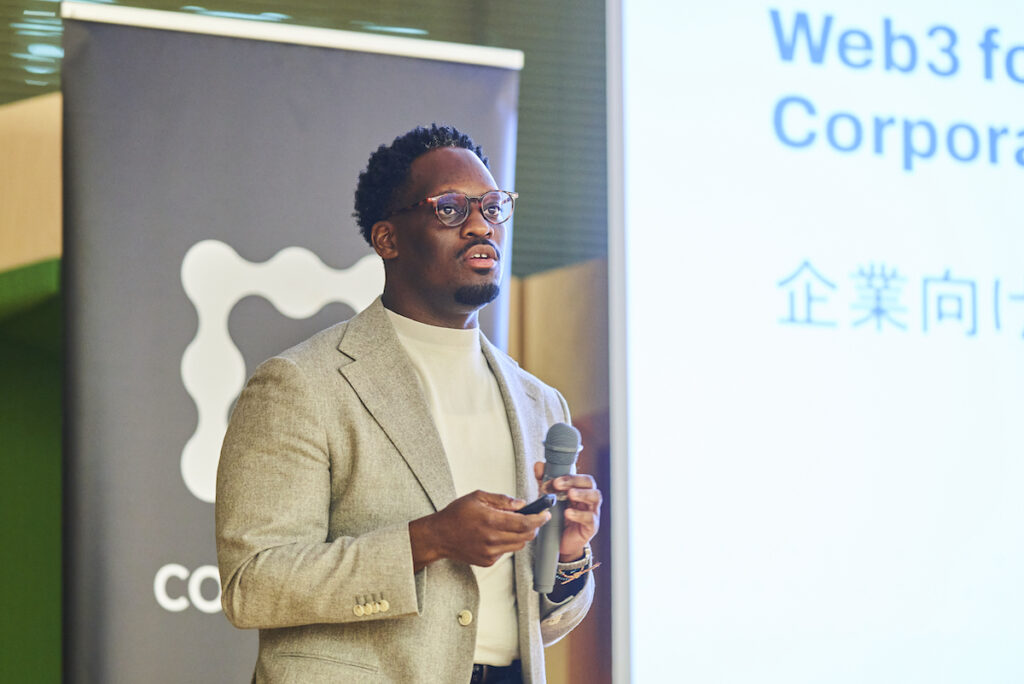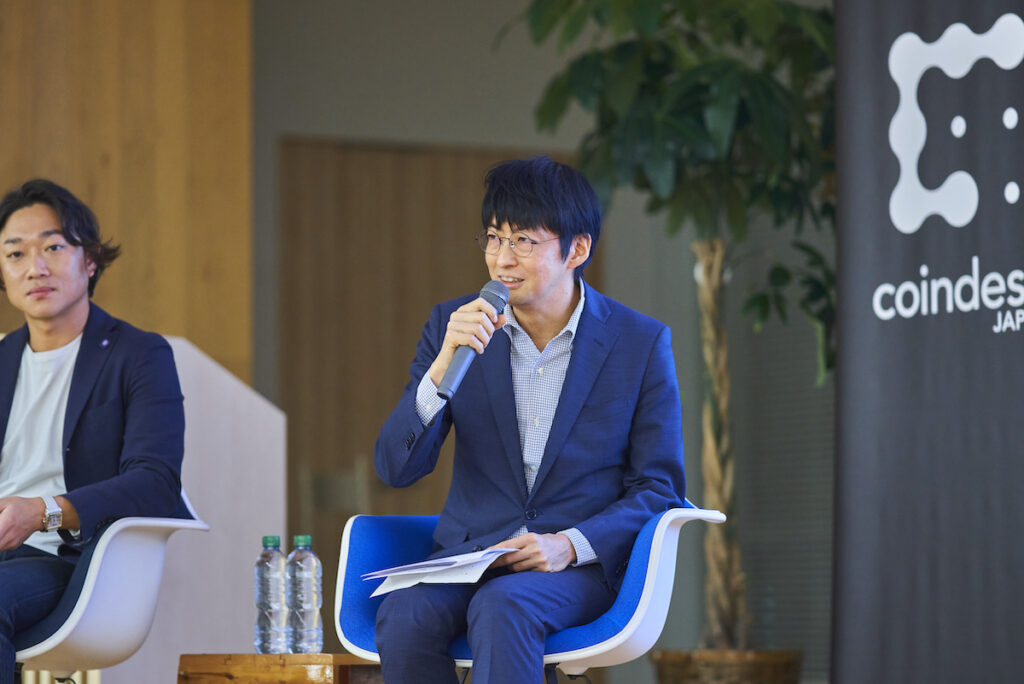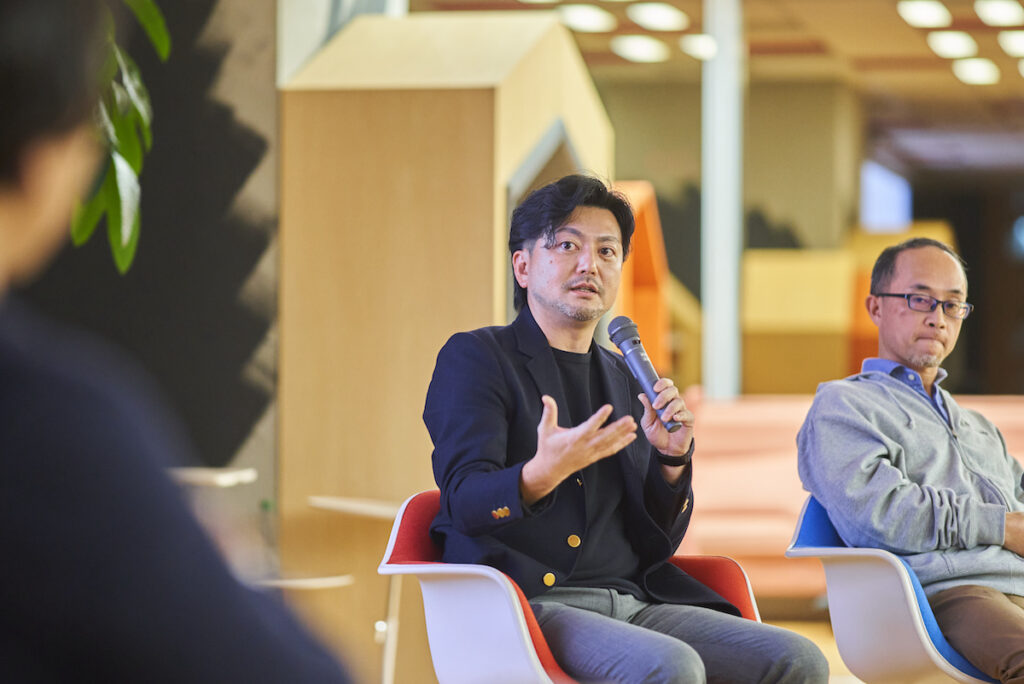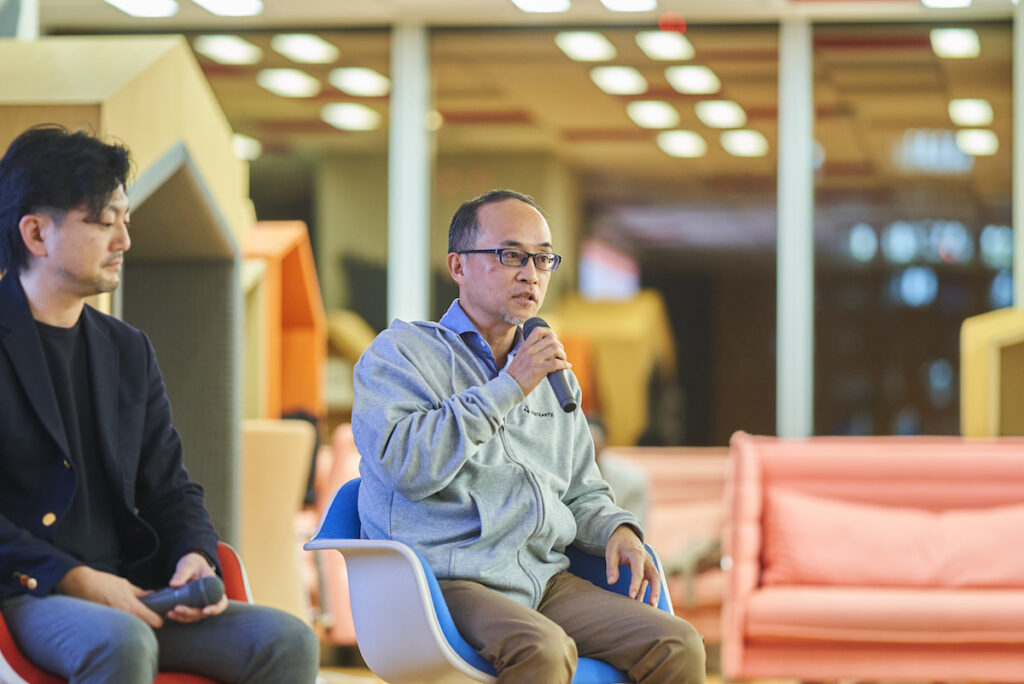
Moving towards 2024, movements surrounding Web3 are becoming more active. Despite being called the “winter of crypto assets,” Bitcoin has more than doubled since the beginning of the year, and despite the weaker yen, it is on track to reach a new all-time high in yen terms.
Efforts to issue stable coins born in Japan are in full swing, the issuance amount of security tokens (digital securities) has more than doubled from the previous year, and the provision of the “EXPO2025 Digital Wallet” has begun in anticipation of the Osaka-Kansai Expo. ing.
In 2024, our financial experience may undergo a major update. With such a premonition, on November 30th, “btokyo members”, one of Japan’s leading communities thinking about the future of Web3 and digital assets, and CoinDesk JAPAN announced, “New financial experiences opened up by Web3 – In 2024, the first year of stable coins, We held a hybrid seminar titled “What is a new era wallet?” The sponsor is Fireblocks, a major crypto asset custody company.

 Mr. Stephen Richardson
Mr. Stephen RichardsonThe seminar started with a keynote from Stephen Richardson, APAC & Managing Director of Financial Markets at Fireblocks. We introduced the company’s efforts to provide secure Web3 infrastructure to various Web3 service providers.
Fireblocks’ latest market capitalization is 1.2 trillion yen, and it recently raised 150 billion yen. With offices around the world, we have over 1,800 customers. “Currently, $4 trillion is transacted through Fireblocks, which is 15% of public blockchains,” Richardson said. It provides infrastructure that can be used for a variety of purposes in the Web3 industry, including trading, financial management, NFT issuance for games, and stable coin issuance.
He pointed out that security is essential for Web3, and “if it gets hacked, the project is doomed.” He continued that it is essential to build a solid architecture from the beginning.
The company’s products support cybersecurity in three layers. The first is Intel SGX (Software Guard Extensions). The second is MPC-CMP. The third is TAP (Transaction Authority Policy).
Intel SGX can be said to be an industry standard, and the second and third points are worth noting. MPC-CMP is a technology based on a paper published by the company’s cryptologist. It uses the latest cryptography to achieve high security.
TAP is an idea that utilizes MPC-CMP to introduce corporate governance rules to on-chain assets. Traditionally, multisig has been used for on-chain asset management, but multisig is dependent on people. He stated that by defining processes in Fireblocks that were traditionally performed by individual personnel, it is possible to eliminate the need for humans and ensure safety and reliability.
Recently, we have been offering non-custodial wallets as “Wallet as a Service.” He explained that by using Fireblocks, Web3 service providers can provide secure non-custodial wallets to their customers.
Finally, as examples of actual use, we will introduce cases in which a payment company uses stable coins to settle payments for merchants, and a company airdrops NFTs to increase user engagement. He also stated that tokenization of RWA (real-world assets) is a trend that is gaining attention. Specifically, the beer brand Heineken uses NFTs to turn beer consumption into a game, and the e-commerce site Flipkart, known as India’s Amazon, airdrops NFTs to users as part of its loyalty program. Ta.
Furthermore, as a Japanese example, we will introduce the popular NFT game “Captain Tsubasa -RIVALS-“. He said that it is used for treasury (asset) management and NFT issuance.

 Mr. Junichiro Hatogai of the Bank of Japan
Mr. Junichiro Hatogai of the Bank of JapanThe panel discussion that followed the keynote included Koichiro Shimoyama from NTT Digital, Ken Kanetomo from Konami Digital Entertainment, and Junichiro Hatogai from the Bank of Japan. Yosuke Shiraishi of the Japan Crypto Asset Business Association, who served as the moderator, first asked the three to look back on 2023, and Mr. Hatogai first responded by saying, “There has been a period in which the expansion of large companies and financial institutions has become noticeable.” Stated. In the United States, PayPal issues a stablecoin. “I thought that the world of Web3 was a bit of an expert, but for individual consumers, UI/UX
“Companies that are familiar with the market are moving in,” he said, pointing out the impact. He also touched on asset management giant BlackRock’s application for a Bitcoin ETF (exchange traded fund), saying, “Existing finance and crypto assets have been merging with each other ever since they were considered completely different things.” He continued that such movements are the fun and hope of innovation, but financial authorities around the world are debating the balance with financial stability day and night.
Regarding the Central Bank Digital Currency (CBDC), which is attracting attention along with Star Bull Coin, Mr. Shiraishi asked, “How will our lives change if CBDC is issued?” Mr. Hatogai answered, “Our time horizon ( I was struck by his answer, “The time axis) is probably different from that of other companies, and we think in terms of 100 or 200 years.We have a major mission to continue to provide low-cost and reliable payment methods.”

 Ken Kanetomo of Konami Digital Entertainment
Ken Kanetomo of Konami Digital EntertainmentNext, Mr. Shiraishi asked Mr. Kintomo about the possibility that even if the so-called infrastructure changes, such as wallets, stable coins, and CBDC, no one will use them if there is no content.
Mr. Kanetomo said, “Games are good at bringing people together, but right now we don’t have any experiences beyond that. By using NFTs, we can go out into the world outside of games, and connect the real and digital. “I think this will create a new worldview,” he said, referring to his current efforts.When he talked about this in the spring, there wasn’t much of a response, but RWA (real assets) has emerged as a trending word, and individuals are now becoming increasingly aware of it. , stated that people have come to understand the importance of paying attention to the value of things used in society and connecting that value.
“As the tokenization of value that was previously illiquid as RWA spreads, I think cases will emerge where such services and games are connected.” (Kanatomo)
Mr. Shiraishi continued, “The Internet has opened up space. Blockchain has turned intangible things that were difficult to convert into assets into value, and also made it possible for individuals to exchange things P2P.”

 Mr. Koichiro Shimoyama of NTT Digital
Mr. Koichiro Shimoyama of NTT DigitalOne of the major tailwinds for Japan’s Web3 was the announcement in November 2022 by NTT Docomo that it would invest 600 billion yen in Web3. What is NTT Docomo aiming for?
“What blockchain does is distribute information, and even if Bitcoin were the only thing left in the future, computers, electricity, and communications would be absolutely essential. It is inevitable that NTT Docomo will work on this,” Shimoyama said. Cryptocurrency assets are tokens that support the infrastructure called blockchain, and he introduced a view that seems to come from the financial industry, saying that they have become an interesting asset class.
NTT Docomo has not made any official announcement yet, but it is gradually revealing information about its Web3 wallet “scramberry.” Mr. Shimoyama said, “We carefully solved the issues of security, ease of use, and familiarity” in order to achieve so-called mass adoption, in which many people use the product. Regarding mass adoption, Mr. Kanetomo continued, “The key is to communicate without using terms such as blockchain, crypto assets, NFTs, and wallets as much as possible.”
Other topics discussed include wallets, stable coins, and the possibility of cross-border games. Regarding wallets, Mr. Hatogai pointed out that many Japanese people own devices that enable high security, and that “before we realized it, we had a fairly decentralized infrastructure.”

 Yosuke Shiraishi of Japan Crypto Asset Business Association
Yosuke Shiraishi of Japan Crypto Asset Business AssociationThe market, which was called winter, is now recovering, and some are expecting even more excitement in 2024, when Bitcoin will reach its halving. Mr. Shiraishi asked three people about their outlook for 2024.
Mr. Shimoyama said, “Web3-like things are starting to enter the next phase.From being used simply as an asset class, concrete use cases, especially industrial use cases, are emerging.As a result, further value as an asset class is emerging. It may lead to this,” he said. He further pointed out, “Nowadays people say things like AI instead of blockchain, but AI is where decisions are made, and blockchain is where they are executed.In a sense, they are responsible for the nerves and muscles, so they are not far off from each other.”
Mr. Kanetomo said, “The role of wallets as a gate from the real world to the digital world will expand, and stablecoins will emerge as a common currency that connects the real and digital worlds.In Web3 terms, The world will become one.” What goes into the wallet is not only crypto assets and stable coins, but also probably points, security tokens (digital securities), and the various pay services that currently exist. I’m sure they’ll come in. This will be the year we start to see them.”
Mr. Hatogai said, “Many central bankers pursue the technology side, even though they are skeptical about crypto assets.In other words, whether it is summer or winter, they continue to pursue technology with the same passion. Personally, I believe that we will soon live in a world where we spend most of our time in the digital world, and how will value be exchanged when the real and digital worlds mix? “I’m daydreaming about what will happen to new money in the new world. I don’t know if it will be in 2024 or 2040, but if you think about it from that perspective, it’s fun to connect all the different stories.”
Finally, Mr. Shiraishi summarized that if we reach an era in which everyone has a wallet, we will finally be able to focus on the essential things, such as what kind of services and value we can provide.
|Text/Editing: CoinDesk JAPAN Editorial Department
|Photo: btokyo members
The post The era when everyone has a wallet and uses stable coins has arrived — how will Web3 change the financial experience?[Event Report]| CoinDesk JAPAN appeared first on Our Bitcoin News.

 1 year ago
102
1 year ago
102














 English (US) ·
English (US) ·